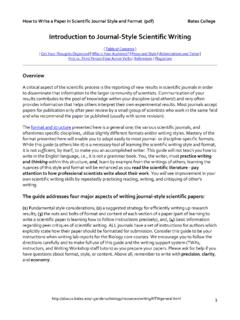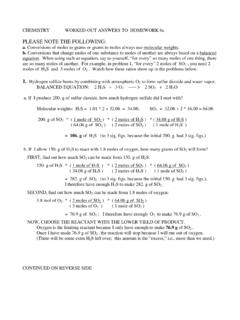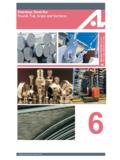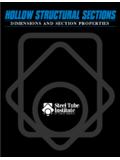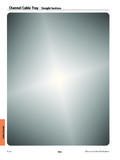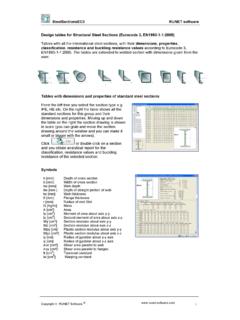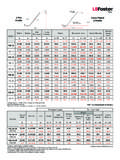Transcription of The Structure, Format, Content, and Style of a Journal ...
1 How to Write a Paper in Scientific Journal Style and format (pdf) Bates College The structure , format , content , and Style of a Journal - Style Scientific Paper | Table of Contents | FAQs |. | Rationale | Sections | Section Headings | Title | Authors and Affiliation | Abstract| Introduction| Methods| Results|. Discussion | Acknowledgments| Literature Cited | Appendices Why a Scientific format ? The scientific format may seem confusing for the beginning science writer due to its rigid structure which is so different from writing in the humanities. One reason for using this format is that it is a means of efficiently communicating scientific findings to the broad community of scientists in a uniform manner.
2 Another reason, perhaps more important than the first, is that this format allows the paper to be read at several different levels. For example, many people skim Titles to find out what information is available on a subject. Others may read only titles and Abstracts. Those wanting to go deeper may look at the Tables and Figures in the Results, and so on. The take home point here is that the scientific format helps to insure that at whatever level a person reads your paper (beyond title skimming), they will likely get the key results and conclusions. The Sections of the Paper Most Journal - Style scientific papers are subdivided into the following sections: Title, Authors and Affiliation, Abstract, Introduction, Methods, Results, Discussion, Acknowledgments, and Literature Cited, which parallel the experimental process.
3 This is the system we will use. This website describes the Style , content , and format associated with each section. The sections appear in a Journal Style paper in the following prescribed order: Experimental process Section of Paper What did I do in a nutshell? Abstract What is the problem? Introduction How did I solve the problem? Materials and Methods What did I find out? Results What does it mean? Discussion Who helped me out? Acknowledgments (optional). Whose work did I refer to? Literature Cited Extra Information Appendices (optional). ~ganderso/biology/resources/ 1.
4 How to Write a Paper in Scientific Journal Style and format (pdf) Bates College Section Headings: Main Section Headings: Each main section of the paper begins with a heading which should be capitalized, centered at the beginning of the section, and double spaced from the lines above and below. Do not underline the section heading OR put a colon at the end. Example of a main section heading: INTRODUCTION. Subheadings: When your paper reports on more than one experiment, use subheadings to help organize the presentation. Subheadings should be capitalized (first letter in each word), left justified, and either bold italics OR underlined.
5 Example of a subheading: Effects of Light Intensity on the Rate of Electron Transport Title, Authors' Names, and Institutional Affiliations 1. Function: Your paper should begin with a Title that succinctly describes the contents of the paper. Use descriptive words that you would associate strongly with the content of your paper: the molecule studied, the organism used or studied, the treatment, the location of a field site, the response measured, etc. A majority of readers will find your paper via electronic database searches and those search engines key on words found in the title.
6 2. Title FAQs 3. format : The title should be centered at the top of page 1 (DO NOT use a title page - it is a waste of paper for our purposes); the title is NOT underlined or italicized. the authors' names (PI or primary author first) and institutional affiliation are double-spaced from and centered below the title. When more then two authors, the names are separated by commas except for the last which is separated from the previous name by the word "and". ~ganderso/biology/resources/ 2. How to Write a Paper in Scientific Journal Style and format (pdf) Bates College For example: Ducks Over-Winter in Colorado Barley Fields in Response to Increased Daily Mean Temperature Ima Mallard, Ura Drake, and Woodruff Ducque Department of Wildlife Biology, University of Colorado - Boulder The title is not a section, but it is necessary and important.
7 The title should be short and unambiguous, yet be an adequate description of the work. A general rule-of-thumb is that the title should contain the key words describing the work presented. Remember that the title becomes the basis for most on-line computer searches - if your title is insufficient, few people will find or read your paper. For example, in a paper reporting on an experiment involving dosing mice with the sex hormone estrogen and watching for a certain kind of courtship behavior, a poor title would be: Mouse Behavior Why? It is very general, and could be referring to any of a number of mouse behaviors.
8 A better title would be: The Effects of Estrogen on the Nose-Twitch Courtship Behavior in Mice Why? Because the key words identify a specific behavior, a modifying agent, and the experimental organism. If possible, give the key result of the study in the title, as seen in the first example. Similarly, the above title could be restated as: Estrogen Stimulates Intensity of Nose-Twitch Courtship Behavior in Mice 4. Strategy for Writing Title. ~ganderso/biology/resources/ 3. How to Write a Paper in Scientific Journal Style and format (pdf) Bates College ABSTRACT. 1. Function: An abstract summarizes, in one paragraph (usually), the major aspects of the entire paper in the following prescribed sequence: the question(s) you investigated (or purpose), (from Introduction).
9 O state the purpose very clearly in the first or second sentence. the experimental design and methods used, (from Methods). o clearly express the basic design of the study. o Name or briefly describe the basic methodology used without going into excessive detail-be sure to indicate the key techniques used. the major findings including key quantitative results, or trends (from Results). o report those results which answer the questions you were asking o identify trends, relative change or differences, etc. a brief summary of your interpretations and conclusions. (from Discussion).
10 O clearly state the implications of the answers your results gave you. Whereas the Title can only make the simplest statement about the content of your article, the Abstract allows you to elaborate more on each major aspect of the paper. The length of your Abstract should be kept to about 200-300 words maximum (a typical standard length for journals.). Limit your statements concerning each segment of the paper ( purpose, methods, results, etc.) to two or three sentences, if possible. The Abstract helps readers decide whether they want to read the rest of the paper, or it may be the only part they can obtain via electronic literature searches or in published abstracts.

